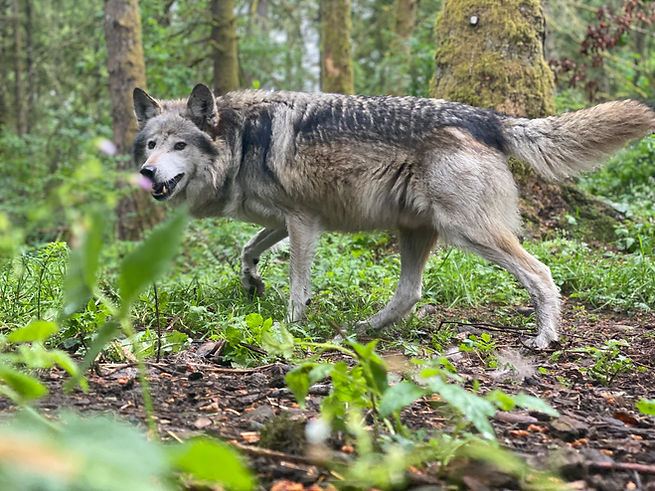Physiology
Wolves are designed to play a particular role in their ecosystems – large carnivores that pursue both large and small prey through different kinds of habitats (such as open plains, dense forest, deep snow, steep slopes, and water). They adapt over time to better serve their ecosystems and survive in an ever-changing world.


Musculature
Wolves' proficient hunting abilities come from a combination of speed, stamina, and strategy.
They have lean, muscular bodies set on long powerful legs which enable them to pursue prey. Because wolves have narrow chests and outward–splayed forelegs, their hind legs can move in the same track as their front legs, which is an advantage in covering ground efficiently.
Wolves’ large, well-padded feet help to spread their weight out over snow and allow them to efficiently grip irregular surfaces like rocks and logs, too.
Reproduction
Wolves breed once a year. Their breeding season usually spans February through March, but varies depending on location. The mother wolf gives birth 63 days later in roughly April or May, usually to a litter of about four to eight pups, each weighing about 1 pound.
The pups are born in a den, where they stay for the first six to eight weeks of their life. At birth, pups cannot see, hear, or maintain warmth - requiring constant care from their mother. By eight weeks old, the pups can venture out of the den and begin their life of learning how to be a predator.


Jaw Strength
Wolves have powerful jaws, capable of exerting about 1,500 pounds of pressure per square inch — or twice that of the domestic German Shepard.
Wolves are accustomed to a feast and famine diet, often going many days without eating and then consuming as much as 20% of their body weight in a single sitting! They are opportunistic hunters so they will take down what they can get, which often happens to be weak, sick, old, and very young prey.
However, they are also generalist hunters, meaning they can adapt to different food sources such as fishing, beaver ambushing, food from the ocean, etc. This behavior trait can lead to changes in the family groups' culture.
Senses
HEARING: Their hearing is excellent too. Under certain conditions, wolves can hear a howl as far as six miles away in the forest and ten miles away on the open tundra. Their ears move independently from one another to help triangulate sounds, and the fur in their ears not only keeps them warm and cool, but also helps to trap the sound so their brain has longer to process it.
SMELL: Wolves have an extraordinary sense of smell – up to 100 times greater than humans. Under the right conditions, a wolf can smell anywhere from 300 yards to 1 mile away. They can also close one nostril after inhaling a scent and continue breathing through the other one, to allow their brain to process the captured scent longer!
TOUCH: coming soon
VISION: coming soon

